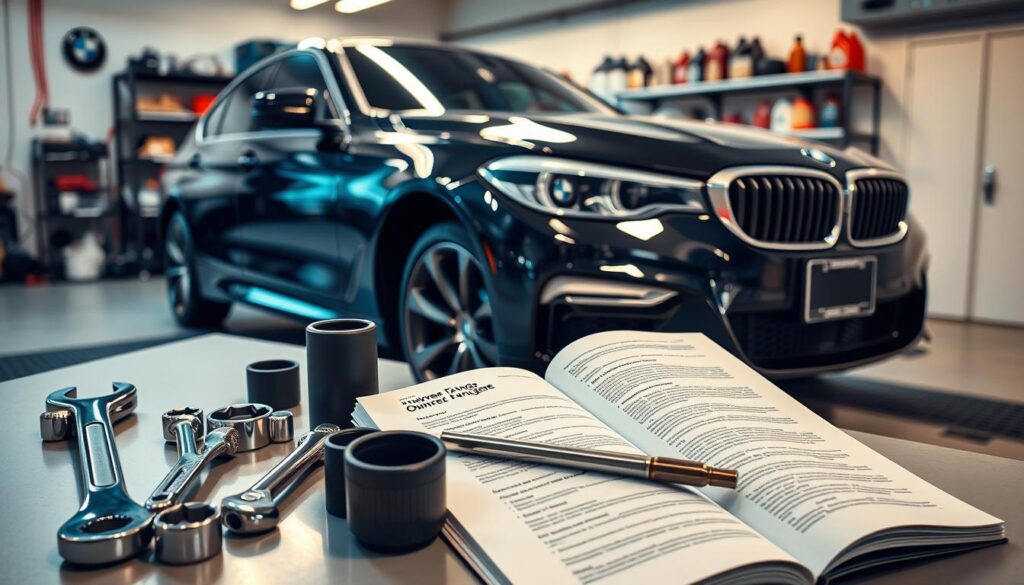BMW Oil Change cost : Typical Costs & What to Expect
Table of Contents
Keeping a vehicle in top shape requires regular maintenance. For many drivers, understanding the cost of essential services like an oil change is crucial. Proper care ensures the engine runs smoothly and extends the car’s lifespan.
This article dives into what influences the price of an oil change. Factors like location, labor rates, and the type of oil used can make a difference. Whether opting for a dealership or an independent shop, knowing what to expect helps drivers make informed decisions.
By breaking down these elements, readers can better plan for their vehicle’s upkeep. Regular service not only maintains performance but also prevents costly repairs down the road.
Understanding the Typical BMW Oil Change Cost

Drivers often seek clarity on the financial aspects of car care. One of the most common services is an oil change, which ensures the engine runs smoothly. The price for this service can vary widely depending on several factors.
Average Cost Across the United States
Nationally, the cost of an oil change typically ranges from $100 to $250. However, in high-cost areas like the Bay Area, California, prices can soar to $390. This variation is often due to differences in labor rates and local market conditions.
For example, drivers in Dallas might pay around $170, while those in Maryland could find services for as low as $99. In Wisconsin, the average is closer to $200. These regional differences highlight the importance of researching local options.
Regional Price Variations
California dealerships often charge 2-3 times more than their Midwest counterparts. This is primarily due to higher labor costs and operating expenses. On the other hand, independent shops frequently offer more competitive pricing, sometimes undercutting dealerships by 20-40%.
BMW Value Service is another option, with prices ranging from $90 to $150 at participating locations. However, availability varies by zip code, and some models, like the X5, may not be covered in certain regions.
While independent shops can save drivers money, they may not always use OEM-certified parts. This trade-off is worth considering when choosing where to service your vehicle.
Factors Influencing BMW Oil Change Prices

Several elements play a role in determining the price of essential car maintenance services. From where you get the work done to the type of materials used, each factor can impact the final bill. Understanding these influences helps drivers make smarter choices for their vehicle’s upkeep.
Dealership vs. Independent Service Centers
Choosing between a dealership and an independent shop can significantly affect the cost. Dealerships often use OEM-certified parts and specific oil types, which can drive up the price. However, they may offer promotions or discounted labor rates to attract customers.
Independent service centers, on the other hand, tend to be more affordable. They may use aftermarket parts, reducing costs by 15-25%. While this can save money, it’s essential to ensure the quality of materials used aligns with your vehicle’s needs.
Type of Oil and Filter Used
The materials chosen for the service also play a crucial role. Synthetic oil, for example, is more expensive but offers better protection for the engine. Filters vary in quality and price, with OEM options costing more than aftermarket alternatives.
Using high-quality parts ensures the engine runs smoothly and extends its lifespan. However, it’s worth weighing the benefits against the added expense to find the right balance for your vehicle.
Additional Services and Maintenance Packages
Many service centers offer bundled packages that include oil changes along with inspections or fluid top-offs. These packages can provide value but may also include services that aren’t immediately necessary.
Seasonal specials, such as winter discounts, can also lower costs by 10-20%. Taking advantage of these offers can make routine maintenance more affordable without compromising on quality.
DIY vs. Professional BMW Oil Changes
Deciding between DIY and professional services for vehicle maintenance can save time and money. Both options have their advantages, but understanding the differences helps car owners make the best choice for their needs.
Cost Comparison: DIY vs. Dealership
Handling an oil change yourself can cost around $75 for materials, including 7 quarts of oil and a filter. In contrast, dealerships may charge up to $390 for the same service. While DIY saves money, it requires time and effort.
Dealerships often provide perks like free loaner cars and complementary inspections. These benefits can add value, especially for busy drivers who prefer convenience.
Tools and Materials Needed for DIY Oil Changes
To perform a DIY oil change, you’ll need a few essential tools. Rhino ramps, a torque wrench, and an oil pan are must-haves. These items can be purchased for around $70 combined.
Recycling waste oil is free at stores like AutoZone or O’Reilly. This makes DIY maintenance both cost-effective and environmentally friendly.
Pros and Cons of DIY Oil Changes
DIY oil changes offer full control over the quality of parts used. This ensures the engine receives the best care possible. However, mistakes can void warranties, so precision is key.
- Pros: Cost savings, control over materials, and flexibility in timing.
- Cons: Requires time, effort, and technical knowledge.
For most models, it’s recommended to perform an oil change every 10,000 miles or 12 months. This keeps the engine running smoothly and maintains its performance over time.
Conclusion
Maintaining a car’s performance involves understanding the key factors that influence its upkeep. Prices for essential service can vary widely based on location and provider. Dealerships often offer promotions, but independent shops may provide more affordable options.
DIY approaches can save money but require time and precision. Professionals ensure warranty compliance and use high-quality materials. Prioritizing OEM parts helps maintain engine health and resale value.
Regular care keeps your vehicle running smoothly and prevents costly repairs. By weighing the pros and cons of each option, drivers can make informed decisions for their car’s maintenance needs.

